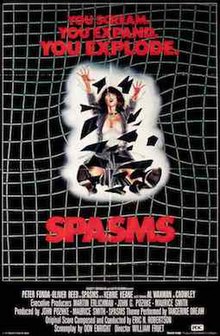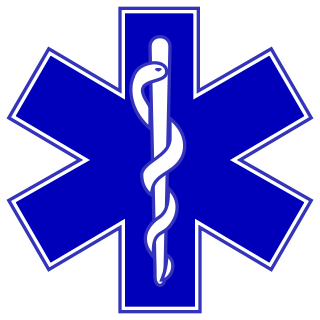
In Greek mythology, the Rod of Asclepius, also known as the Staff of Aesculapius and as the asklepian, is a serpent-entwined rod wielded by the Greek god Asclepius, a deity associated with healing and medicine. In modern times, it is the predominant symbol for medicine and health care, although it is sometimes confused with the similar caduceus, which has two snakes and a pair of wings.
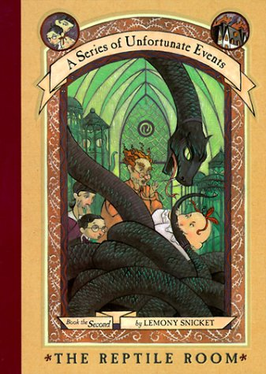
Book the Second: The Reptile Room is the second book in the children's series A Series of Unfortunate Events, written by Daniel Handler under the pseudonym Lemony Snicket. The book tells the story of the Baudelaire orphans, as they are sent to live with a distant relative named Montgomery Montgomery.
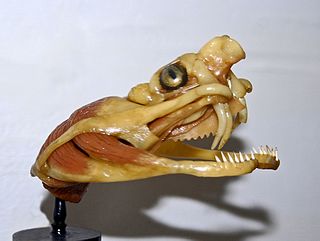
Snake venom is a highly toxic saliva containing zootoxins that facilitates in the immobilization and digestion of prey. This also provides defense against threats. Snake venom is injected by unique fangs during a bite, whereas some species are also able to spit venom.
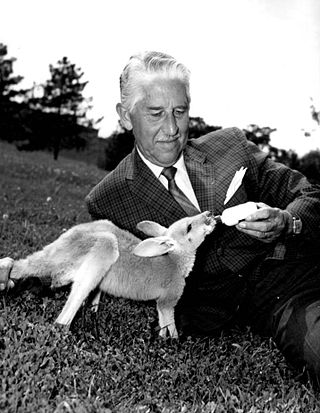
Richard Marlin Perkins was an American zoologist. He is best known as the host of the television program Mutual of Omaha's Wild Kingdom from 1963 to 1985.

"Asp" is the modern anglicisation of the word "aspis", which in antiquity referred to any one of several venomous snake species found in the Nile region. The specific epithet, aspis, is a Greek word that means "viper". It is believed that aspis referred to what is now known as the Egyptian cobra.

The inland taipan, also commonly known as the western taipan, small-scaled snake, or fierce snake, is a species of extremely venomous snake in the family Elapidae. The species is endemic to semiarid regions of central east Australia. Aboriginal Australians living in those regions named the snake dandarabilla. It was formally described by Frederick McCoy in 1879 and then by William John Macleay in 1882, but for the next 90 years, it was a mystery to the scientific community; no further specimens were found, and virtually nothing was added to the knowledge of this species until its rediscovery in 1972.
Bill Haast was the owner and operator, from 1947 until 1984, of the Miami Serpentarium, a tourist attraction south of Miami, Florida, where he entertained customers by performing live venom extraction from snakes. After closing the Serpentarium, he opened the Miami Serpentarium Laboratories, a facility in Punta Gorda, Florida that produced snake venom for medical and research use. Haast extracted venom from venomous snakes from the time he was a boy.
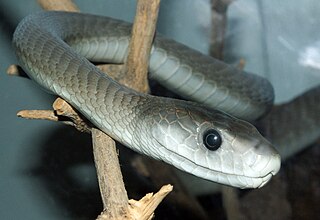
The black mamba is a species of highly venomous snake belonging to the family Elapidae. It is native to parts of sub-Saharan Africa. First formally described by Albert Günther in 1864, it is the second-longest venomous snake after the king cobra; mature specimens generally exceed 2 m and commonly grow to 3 m (9.8 ft). Specimens of 4.3 to 4.5 m have been reported. Its skin colour varies from grey to dark brown. Juvenile black mambas tend to be paler than adults and darken with age. Despite the common name, the skin of a black mamba is not black, but rather describes the inside of its mouth, which it displays when feeling threatened.

Five Deadly Venoms, also known as The Five Venoms, is a 1978 Hong Kong martial arts mystery film directed and co-written by Chang Cheh and produced by Runme Shaw for the Shaw Brothers Studio. It stars Chiang Shieng as Yang Tieh, a martial arts pupil who aims to follow his master's dying wish: to find the new identities of the master's five previous pupils, and kill them if they have turned towards evil. While doing so, Yang stumbles onto a web of murders and investigations involving all five pupils. Each of the master's previous pupils practices a unique animal-themed style, with the animals being based on the Five Poisonous Creatures of Chinese folklore.

Venom is a 1981 British natural horror-thriller film directed by Piers Haggard, written by Robert Carrington, and starring Klaus Kinski, Oliver Reed, Nicol Williamson, and Sarah Miles. It is based on Alan Scholefield's novel of the same name.

Punnami Naagu is an Indian Telugu-language horror drama film directed by Rajasekhar and produced by AVM Productions. The film brought recognition to Chiranjeevi and his first Filmfare nomination. The other leads in the film, including Rati Agnihotri, Narasimha Raju and Padmanabham played important roles. The film was released on 13 June 1980. It is a remake of the director's own Kannada film Hunnimeya Rathriyalli. It also marked the Telugu debut for Malayalam actress, Menaka G. Suresh.

The Lair of the White Worm is a 1988 supernatural comedy horror film written, produced and directed by Ken Russell, and starring Amanda Donohoe, Hugh Grant, Catherine Oxenberg and Peter Capaldi. Loosely based on the 1911 Bram Stoker novel of the same name, it follows the residents in and around a rural English manor that are tormented by an ancient priestess after the skull of a serpent that she worships is unearthed by an archaeologist.
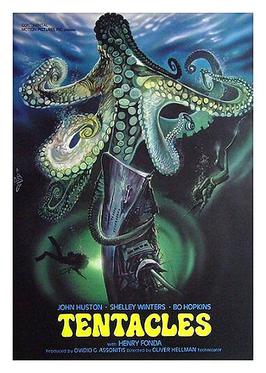
Tentacles is a 1977 horror-thriller film directed by Ovidio G. Assonitis and starring John Huston, Shelley Winters, Bo Hopkins, Cesare Danova, Delia Boccardo and Henry Fonda.

Cannibal Apocalypse is a 1980 action horror film directed by Antonio Margheriti and starring John Saxon, Elizabeth Turner, Giovanni Lombardo Radice, Cinzia De Carolis, Tony King and Ramiro Oliveros. The film combines the cannibal film genre with a forerunner of Margheriti's Vietnam War films.
Creature of Destruction is a 1967 American made-for-television film produced and directed by Larry Buchanan. It is an uncredited color remake of the 1956 movie The She Creature directed by Edward L. Cahn.
Sarpakadu is a 1965 Indian Malayalam-language film, directed by J. D. Thottan and produced by P. K. Sathyapal. The film stars Madhu, Sukumari, Ambika and Adoor Bhasi. It was released on 31 December 1965.

Uninvited is a 1987 American science-fiction horror film written, produced and directed by Greydon Clark and starring George Kennedy, Alex Cord, Clu Gulager, Toni Hudson and Eric Larson. The film primarily takes place aboard a luxury yacht owned by a criminal multimillionaire and bound for the Cayman Islands, whose passengers and crew are terrorized by a mutant cat.
Blood Vessel is a 2019 horror film that was filmed in Melbourne, Australia. The film was directed by Justin Dix and written by Dix and Jordan Prosser. It stars Alyssa Sutherland, Robert Taylor, Nathan Phillips, Christopher Kirby, John Lloyd Fillingham, and Alex Cooke. The film premiered as a closing night film at 2019 FilmQuest in Provo, Utah, where it was nominated for eleven awards, winning for Best Art Department, Best Costume, and Best Supporting Actress for Sutherland. The film was released on 21 July 2020 via video-on-demand service Shudder.
"Of Mist, and Grass, and Sand" is a science fiction short story by American writer Vonda N. McIntyre. First published in Analog Science Fiction and Fact in October 1973, it was anthologized multiple times, and also formed the first chapter of McIntyre's 1978 novel Dreamsnake. Set after a nuclear holocaust, "Of Mist, and Grass, and Sand" tells of Snake, a healer who uses the venom of three genetically engineered snakes to heal, and follows her effort to heal a nomad boy of a tumor. The story won the Nebula Award for Best Novelette in 1974. It was also nominated for the Hugo Award in the same category, and for the Locus Award for Best Short Fiction. Scholar Anne Hudson Jones called it a powerful story, and stated that its themes were "mythic and universal".
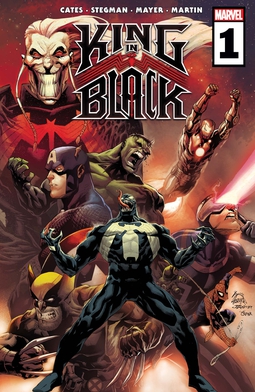
"King in Black" is a comic book event written by Donny Cates with art by Ryan Stegman, and was published from 2020 to 2021 by Marvel Comics. It is a continuation to 2019's "Absolute Carnage", also containing fallout from 2020's "Empyre". In the story, Knull and his symbiotes invade Earth, leaving Eddie Brock / Venom, the Avengers, the X-Men, and numerous other superheroes to protect it.
